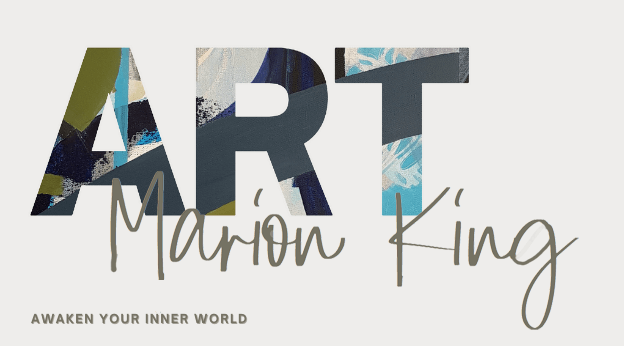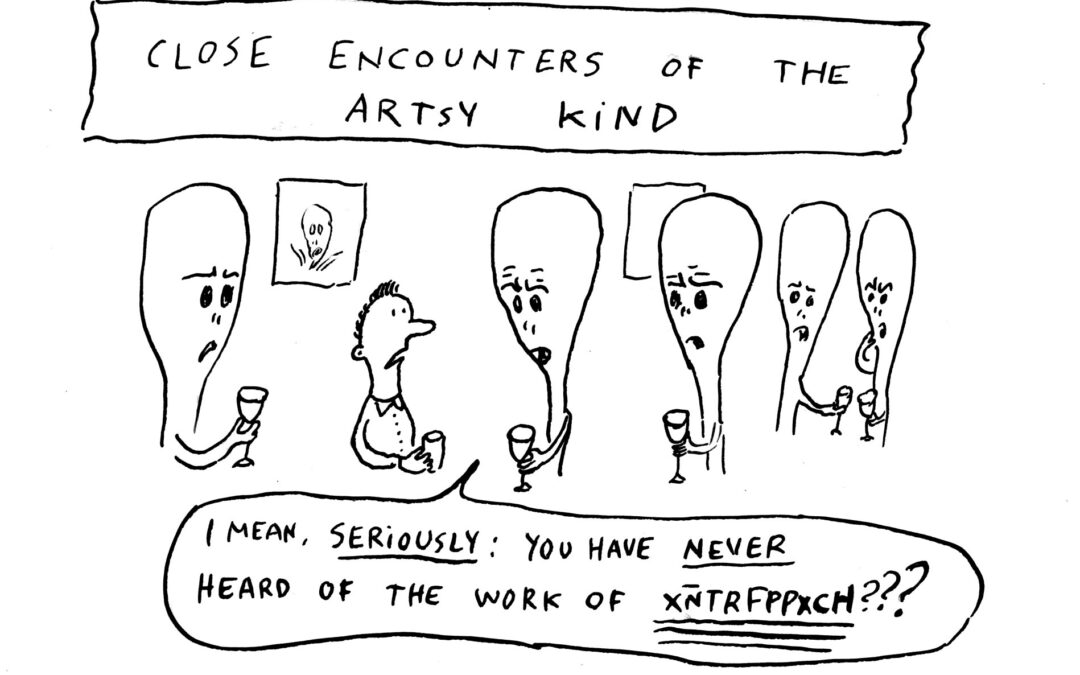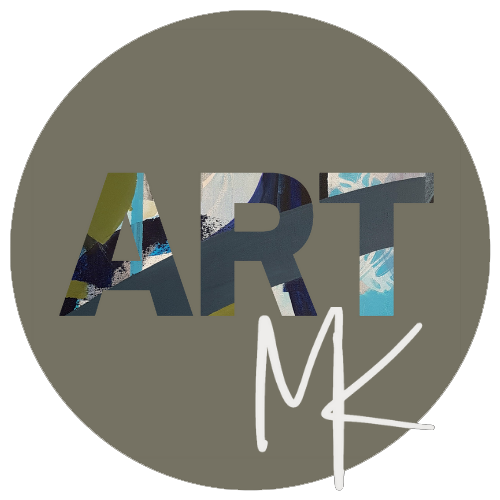I think this cartoon by Pablo Helguera, satirizes nicely the fear many of us experience when we place ourselves in an upmarket artsy setting such as a famous gallery or large art fair. We can be scared we might embarrass ourselves because we aren’t familiar with a certain artist or style of painting. Regardless of how experienced we are as artists or art collectors, we’ve likely all been in this situation. which is why I thought I’d put together some tips for removing the fear and helping you feel more confident about discussing the artwork and asking questions.
The way in which art museums, galleries and fairs are often set up to move people through quickly, doesn’t help. If you don’t understand a piece in the first few seconds, then you feel obliged to move along and forget about it. Possibly because you’re feeling a bit stupid that you don’t understand when everyone around you appears to be engaged in a silent conversation with the said painting. And maybe because you’re scared someone might ask you something about it and you won’t have the correct answer! There seems to be an unwritten rule that only those who fully understand what they’re looking at should speak. Or at least that’s how I used to feel. The thing is, there’s no right or wrong way to understand a painting. What you see and feel in that moment is what you understand.
‘Every painting has the potential to have a different meaning depending upon who’s looking at it. And that is the joy of looking at art.’ — Ben Street
Moving on to asking questions. Think about all the other situations in life where you freely ask questions to gather information and to learn more about whatever you’re interested in. If you’re buying a new sofa, you’ll have lots of questions about where it was manufactured, what kind of textiles have been used to upholster it, the type of frame, cushion filling etc . You’ll shop around until you find the one that best suits your needs. You won’t just buy the first one that you see.
We can take exactly the same approach to viewing art in galleries regardless of whether we’re there to enjoy the work or to add to our collection .
When you find a painting that speaks to you, stop a while and notice the following:
- The scale – is it really big or is it small in relation to you? How does its scale make you feel? Does it draw you in, make you feel in awe, unimpressed, overwhelmed etc?
- Colour – what kind of colours have been used? Vibrant, muted, lots of gold? What effect do the colours have on you, if any?
- Technique – how was the artwork made? Paint, plaster, print, sculpture, wood carving? Think about the tools that may have been used. Consider the marks and lines that you can see.
- Placement – think about the positioning of the artwork in the space where you’re looking at it. Are there other paintings/sculptures/installations surrounding it, that add to the story? Is it an artwork that was created for a church or cathedral? How might it have looked in its original setting?
- Content – try not to be limited by the factual description on the gallery label. This in combination with what we can see in the artwork, helps us understand the story of the work, but it doesn’t take account of our engagement with the artwork. Ask yourself open questions about the artwork so you develop your interpretation of what you can see and more of the story unfolds.
If you think about these points you will naturally have questions that you might or might not want to ask. You’ll have engaged with the artwork sufficiently, to feel confident enough to discuss aspects of it with someone else if you choose to and leave having had a memorable and enjoyable experience.
There’s a great book by Ben Street, How to Enjoy Art: A Guide for Everyone, where he talks about accessing the pleasures of art through spending time noticing certain things and allowing ourselves the time to do it. If you have a chance to read it he goes into detail about the points I mentioned above.


